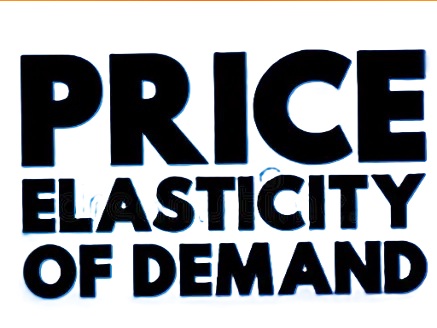📉 Understanding Elasticity of Demand: A Key to Smart Economic Decisions
Introduction
Have you ever wondered why the price of some goods can rise sharply without affecting demand much, while even a small price hike causes demand for others to plummet? This behavior of consumers in response to price changes is captured by an important economic concept: Elasticity of Demand.
Elasticity of demand measures how much the quantity demanded of a good changes when there is a change in its price, income, or the price of related goods. It is a fundamental tool in economics that helps businesses, policymakers, and consumers make informed decisions.
🔍 What Is Elasticity of Demand?
Elasticity of demand refers to the responsiveness of quantity demanded to changes in various economic factors, most commonly:
-
Price of the product (Price Elasticity of Demand)
-
Income of consumers (Income Elasticity of Demand)
-
Price of related goods (Cross Elasticity of Demand)
Let’s break these down.
1️⃣ Price Elasticity of Demand (PED)
Definition: It measures the responsiveness of quantity demanded to a change in the price of the good.
Formula:
PED= % Change in Quantity Demanded (Divided by) % Change in Price
Types of PED:
-
Elastic (>1): A small change in price leads to a large change in quantity demanded. Example: luxury items, electronics.
-
Inelastic (<1): Quantity demanded changes little even with a significant change in price. Example: petrol, medicines.
-
Unitary (=1): Percentage change in demand equals percentage change in price.
-
Perfectly Elastic (=∞): Consumers buy none if the price rises at all.
-
Perfectly Inelastic (=0): Quantity demanded doesn’t change regardless of price.
2️⃣ Income Elasticity of Demand (YED)
Definition: It measures the responsiveness of quantity demanded to changes in consumer income.
Types of Goods:
-
Normal Goods: Demand rises with income (YED > 0)
-
Inferior Goods: Demand falls as income rises (YED < 0)
-
Luxury Goods: Demand rises more than proportionally as income rises (YED > 1)
Example: As income increases, people may buy more organic food (normal good) and fewer instant noodles (inferior good).
3️⃣ Cross Elasticity of Demand (XED)
Definition: It measures the responsiveness of demand for one good to the price change of another good.
Types:
-
Substitutes (XED > 0): Price of Pepsi rises → demand for Coke increases.
-
Complements (XED < 0): Price of printers rises → demand for ink cartridges falls.
📈 Factors Affecting Elasticity of Demand
Several factors determine how elastic or inelastic a product’s demand is:
-
Availability of Substitutes
More substitutes = more elastic demand. -
Necessity vs Luxury
Necessities = inelastic; Luxuries = elastic. -
Proportion of Income Spent
Expensive items = elastic; low-cost items = inelastic. -
Time Period
Longer time = more elastic (people find alternatives over time). -
Addictiveness or Habit
Goods like tobacco tend to be inelastic due to habitual use.
📊 Real-Life Applications of Elasticity
For Businesses:
-
Helps in pricing strategy: Raising prices on inelastic goods increases revenue.
-
Guides product development and marketing decisions.
For Government:
-
Helps design tax policies (e.g., higher taxes on inelastic goods like cigarettes).
-
Assists in evaluating the effects of price controls and subsidies.
For Consumers:
-
Understanding elasticity helps predict price impacts and make better purchasing decisions.
🧠 Summary: Why Elasticity Matters
Elasticity of demand isn’t just a textbook concept — it’s a real-world tool that influences everything from corporate pricing to government taxation. Whether you’re a business owner trying to set the right price or a student learning the ropes of economics, understanding elasticity helps you see how demand reacts to change — and why.
✅ Key Takeaways:
-
Elasticity of demand shows how quantity demanded changes with price, income, or related goods.
-
Price elasticity helps businesses set optimal pricing.
-
Income and cross elasticity explain consumer behavior during economic shifts.
-
Elasticity is crucial for economic forecasting, policy making, and business strategy.
📘 Suggested Reading:
-
“Principles of Economics” by N. Gregory Mankiw
-
“Microeconomics” by Paul Krugman & Robin Wells

